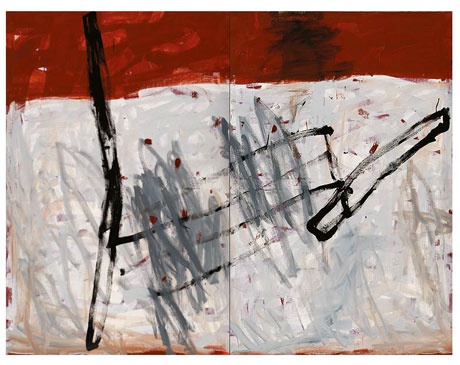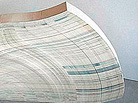6th Exhibition of the Małopolska Province Foundation for the Museum of Contemporary Art
“Six notes about the sixth exhibition.
1. Circumstances of establishing the Foundation within the framework of the National Programme Signs of Time initiated by Waldemar Dąbrowski, the then Minister of Culture, don’t differ from other initiatives of 2004. The programme aimed at making up for years of neglect in gathering contemporary art in public collections. Among other things the program formula was referring to the well-tried method which has been used by the Fond Régional d’Art Contemporaine (FRAC) in France since the 80s, the idea of which included the creation of a national collection of contemporary art basing on regional gatherings complementing one another. The principle determined by the Minister was clear: to each one zloty got for creating a collection in regions, another zloty was to be added by the state. In 16 Polish regions various extra-governmental organisations appeared, most often in the form of associations popularly called the ‘art encouragement associations’. In 2004 the regional council of the Małopolska province formed the Małopolska Province Foundation for the Museum of Contemporary Art.
2. Profile of the collection. Regional or local needs and contexts were taken into consideration in each region, thus complementing the existing gatherings of museums and galleries with new threads, or building the collection from scratch. The expert chapter of the Foundation has initiated and consistently created the collection, paying attention to these phenomena which hadn’t been sufficiently well documented or purposefully omitted in Cracow gatherings. In agreement with the name of the foundation, the profile of the collection has been connected with the idea of forming a contemporary art museum. This museum was to be a museum of 21st century art; this is why the works that came into being in the 90s of the 20th century were included. Since the very beginning Polish art has been placed in the international context. Hence, works by artists from the neighbouring East European countries (Ukraine, Slovakia, Czech, Hungary, Croatia, and Latvia) have been included in the collection. This geographical-historical aspect is important because of our common experiencing the post-totalitarian reality. Thus art of the countries liberated from communism since 1989 is included in the collection.
3. Context of the collection. Five years ago, when first purchases were made, the context of the collection was different than today. Artists included in the collection were carefully selected and represented with different works than in the gatherings of other regions and even in other regional collections of the Małopolska province. The group exhibition summarising the first stage of the programme Signs of Time in Gdańsk in 2006 was a test, during which the Małopolska regional collection was observed thanks to the separateness of its proposition, complementing the concepts of other national collections in an original way. Another show was the exhibition of three regional collections of modern art (the Bunker of Art collection, the Museum of Modern Art in Niepołomice and the very Foundation) in 2007 at the National Museum in Cracow. The collection, even though shown in only a fraction of its already quite large resources, has confirmed the attractiveness of the adopted direction of development.
The Foundation is opened at various forms of collaboration (including borrowing its collections) with various institutions, including the Museum of Contemporary Art in Cracow, which was founded this year.
4. Appeal of the collection materializes clearly in live contact that is at exhibitions. It’s only then that an idea can be clearly shown. Compositions and comparisons of works of art in a gallery space reveal their relations and contexts that are difficult to be shown otherwise. This is also the best way of checking the cohesion of the collection. Other exhibitions are the next stages that determine the directions of developing the collection.
The attractiveness of individual works has been confirmed by their presence at numerous exhibitions at home and abroad.
The collection gathered to date is also of educative attractiveness which is of no small importance for the mission a public collection should play. Beside various ideological directions that are open at various areas of art, the traditional disciplines of painting, sculpture, and drawing, as well as new media, i.e. photography, video art, objects and installations can be shown in each exhibition on outstanding examples. (It is characteristic that the collection has never been arranged in a descriptive manner according to traditional museum departments).
5. The size of the collection is well illustrated by the number of included works and represented artists. In 2009 the foundation has expanded its collection through new acquisitions including 85 works of art (or whole sets of works) made by 44 authors (or author teams). This means 353 objects/exhibits in total. In this year the collection will include a few other artists and next works. This includes over 50 other works got by the way of purchase and donation (also in previous years donations and gifts have been the significant part of the collection). The increased number of authors is now 48.
6. The exhibition of the collection at the BWA Contemporary Art Gallery in Katowice is of unique character because of a few reasons. Obviously, it is the most topical show, since it includes even the works that are still under the process of purchasing, and shows some works that haven’t been shown yet because of various reasons. Necessarily, this time it is a selection — the whole collection cannot be shown at once — but the selection is as large as it can give a reliable image of the whole collection.
The show is arranged at a large and clear space of the exhibition hall of the BWA Contemporary Art Gallery in Katowice, without introducing any additional architecture. The works enter various dialogues between one another, and are susceptible to the assessment in objective conditions. It is the largest show of the collection to date.”
Jan Trzupek
Curator of the exhibition and the President of the Board of the Małopolska Foundation for the Museum of Contemporary Art




